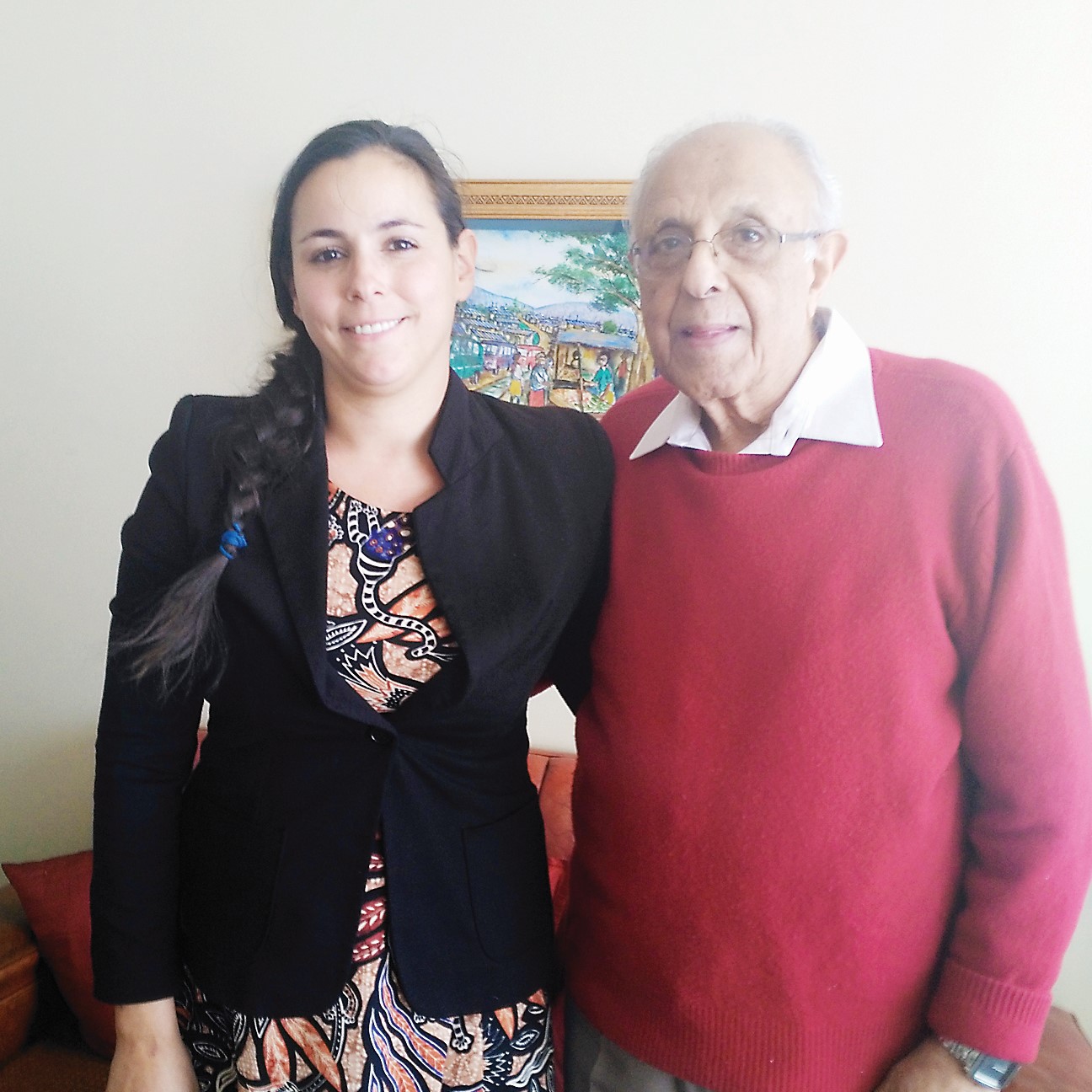
SA

Kathrada’s activism inspired by European antisemitism
JORDAN MOSHE
Dr Roni Mikel Arieli, a cultural historian of Jewish history in Southern Africa, explored Kathrada’s perceptions and reflections on the Holocaust in a meeting hosted by the Johannesburg Holocaust & Genocide Centre (JHGC).
Using Kathrada’s memoirs, an interview with him in 2016, and an array of archival material, Arieli fleshed out Kathrada’s insights on the Holocaust through a distinctively internationalist perception of colonialism.
“[Kathrada’s views] speak for the encounter between Holocaust memory and traumatic memories of racism and their potential to promote solidarity and justice,” she said.
The historian recounted Kathrada’s visit to Europe, notably Auschwitz and Warsaw in 1951, and assessed the impact of his reading of the diary of Anne Frank during his imprisonment on Robben Island. Collectively, they brought the lens of the Holocaust to bear on South Africa, and created a sense of solidarity with the oppressed across continents.
Kathrada was born in 1929 in Schweizer-Reneke, a town in North West Province, to a traditional Indian family. They were no strangers to legislated oppression and discrimination, a reality which worsened with time. In 1939, when the South African parliament decided to enter World War II on the side of the Allies, it placed further restrictions on Indian citizens, Arieli said.
“In response, a new, communist-aligned Indian leadership developed, with Dr Yusuf Dadoo joining the party in 1939,” she said. “Kathrada was drawn to communism as well.”
By the mid-forties, he was admitted to the South African Communist Party (SACP), and it was here that he learned about the atrocities being committed against Jews in Nazi Germany.
Said Arieli, “He told me that he became conscious of the world outside South Africa, and that’s how he learned of Nazism and later on, of course, of the Holocaust and the ghettos.”
Although the SACP initially opposed the war, it shifted its position after Germany invaded the Soviet Union in June 1941, and became a staunch defender of human liberties in the face of Nazi terror.
“Kathrada testified that the party’s anti-fascist message had a great impact on him, especially in light of the right-wing Afrikaner support for Nazism at the time,” said Arieli. “He asserted that the sights of war he witnessed later during his European trip reinforced his beliefs.”
Kathrada became a prominent youth leader, organising the 1946 South African Indian Congress’s passive-resistance movement against the Land Tenure and Indian Representation Act, also known as the Ghetto Act. It restricted the political representation afforded to Indians at the time, and confined their living areas.
Said Arieli, “The use of the term ‘ghetto’ here was, of course, charged with resonances of its use in Nazi Germany.” Indeed, this notion was reinforced when the National Party won the 1948 election, and perpetuated rhetoric which was eerily reminiscent of the Nazi regime.
The general election in 1948 marked the beginning of a new era in South Africa, Arieli said.
In their interview, Kathrada told Arieli that the legislation which followed “might have been taken straight from Hitler’s Third Reich, as some of the most prominent members of the Nationalist Party had unashamedly supported Nazi Germany”.
Kathrada’s understanding of the Holocaust and other war atrocities was heightened in 1951, when he left to serve as head of the Africa desk at the World Federation of Democratic Youth in Budapest. He travelled Europe extensively, including Poland, where he witnessed first-hand the destruction left by the war. In Prague, he learned of a village which had been destroyed by Nazi forces in response to the assassination of Nazi leader Reinhard Heydrich in 1942.
Arieli quoted Kathrada’s journal, “Thoughts of bloody and cruel retribution exacted by the Nazi henchman darkened edges of my consciousness.” The same thoughts pervaded his mind when he visited the site of the Warsaw Ghetto in Poland shortly thereafter.
“When I visited what had been the ghetto, I was reminded of the Nazi atrocities in Czechoslovakia. The Jews had been crushed as ruthlessly as had the villagers, consigned to an area of the city behind a wall almost three metres high,” Arieli quoted Kathrada as saying.
“The Jews had been warned by an escapee from Treblinka that extermination waited at the end of a nightmarish journey. When I visited the site of this blot on humanity, only a modest monument marked the murder of tens of thousands of Jews and paid tribute to those who fought back and died.”
Said Arieli, “While his memoires specifically described the Warsaw victims as Jews, he also recognised the non-Jewish victims of Nazi atrocities,” she said. “He points to similarities between the crushing of the resistance of the ghetto and the oppression of others.”
These stories of resistance gave shape to Kathrada’s universal perception of the cost of the war, and although it depends to a large extent on particularities, he applied it universally.
“He recognised the specific Jewish identity, but placed their resistance alongside broader ideas and also reflected on his own struggle in South Africa,” she said.




